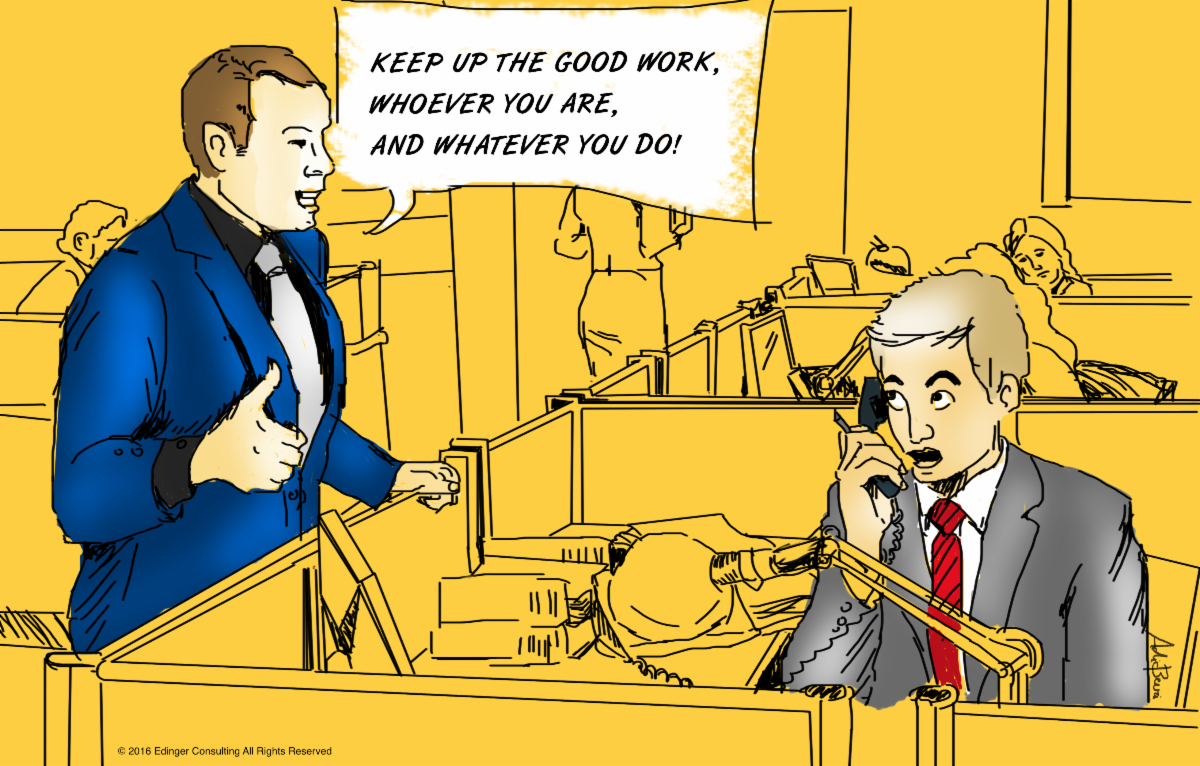
March 2024
Individual Leadership: Email Won’t Inspire People
Recognition is an underrated tool to drive performance. The ROI for leaders is exceptional because learning to use recognition strategically costs you nothing.
Frankly, most leaders are not good at offering meaningful recognition. I had this cartoon drawn years ago to illustrate what I see as a major miss.

Recognition can be used very effectively to create change, replicate success, and establish new behaviors across your organization. Here’s how:
1. Spot the win. Acknowledge the specific behavior you observed, and the more details you include, the better.
2. Link the act to the impact. Did it resolve a problem? Streamline a process? Hit the KPI? Make the connection from behavior to outcome.
3. Make it personal. Express excitement, enthusiasm, gratitude, or satisfaction. Let them know what they did matters to you.
4. Ask for an encore. It’s not just about praise. Get them (and others) to do it again. This is how behaviors to take hold and spread throughout an organization.
When success happens, offer recognition, not as just a pat on the back but as a catalyst for the changes you want to see.
Organization Leadership: Goals Won’t Get You There
Most of you likely rolled out new goals for the year. If you haven’t made observable progress on your 2024 goals, you’d better start doing something different now. Goals alone won’t deliver improved results. New strategies, actions and behaviors do.
As a leader, most of your energy and focus should be on creating clearer strategies, defining better actions, and coaching more effective behaviors. That’s what delivers stronger results.
Lead people with clarity and improve their ability to execute on what you need from them, and you’ll increase the likelihood of achieving those 2024 goals.
Perspective: Camera On or Don't Join
Video conferencing overload. Zoom fatigue. Virtual Burnout. Many of us are feeling “over” the video conference format. I was an early adopter of videoconferencing, and I wrote about it for HBR in this article from 2018. (If only I had considered my management advice as investment advice, my timing would have been excellent!)
I don’t think the issues people have with videoconferencing are actually about the format itself. My sense is that it has more to do with a struggle to pay attention and not multi-task. When the camera is off, we all know we’re getting partial attention at best. It encourages passive listening and engaging in other tasks. If you want to have meaningful discussions via videoconference, require the camera to be on.
LinkedIn Live
Please join me for my next LinkedIn. The topic will be Using Recognition to Create Change. If you enjoyed the article on this topic, please join me for a detailed conversation about how to strategically use recognition to drive results. I’ll dig further into the pragmatics of this idea and work with real time examples during this LinkedIn Livestream event. Contact me here to let me know what questions you have in advance.

Subscribe to Edinger's Insights Newsletter
Edinger’s Insights is packed with strategies and ideas to lead business growth.*
*Scott will never share your contact information
EdingerInsights_SignUp
Thank you for subscribing.
Please try again later.


